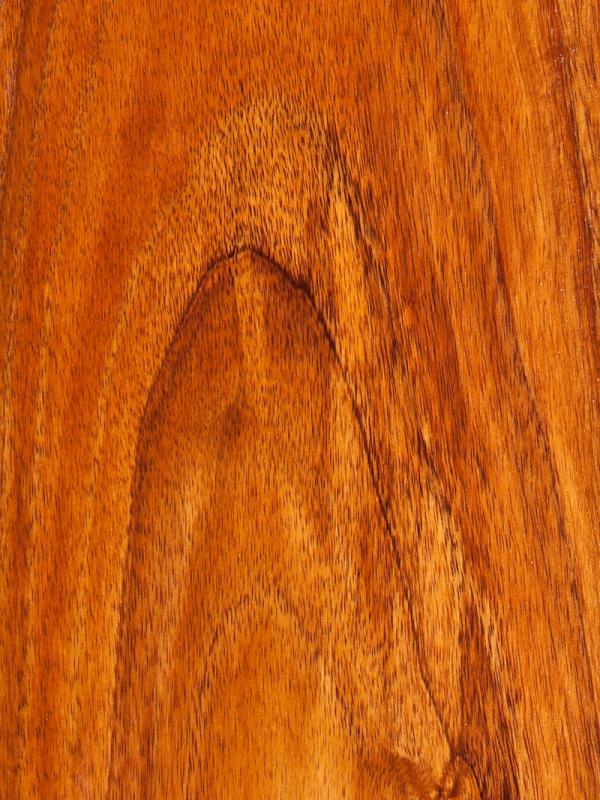
Family: Fabacaea or Legminosae, the legume family.
Origin: All of Hawaii’s eight main islands.
Other common names: Koa-ka, Hawaiian Mahogany.
The tree: Koa is highly adaptable and can be found from a little above sea level and almost to the peaks of the mountains although it mostly grows in rainy regions between 2,500 and 6,000 ft. Its height varies a lot and it can grow to heights of 100 ft with a diameter of 4 ft.
Appearance: It varies from dark brown to a lighter brown with darker streaks and it has a distinctive golden glow. It is fine textured wood and often has an attractive figure.
Density: Average reported specific gravity is about .55(ovendry weight/green volume), equal to an air-dried weight of 42 pcf. Janka hardness is 1220 pounds of force.
Drying & shrinkage: It dries excellently with no warping or splitting. Average reported shrinkage values (green to ovendry) are 3.1% to 4% radial, 5.1% to 6.5% tangential.
Working properties: Koa is an easy wood to work with, glueing and sanding well. It finishes to a high luster.
Durability: Standing trees are susceptible to insect attack but once harvested and seasoned it is highly resistant to fungal decay and insects.
Uses: Probably the most well known uses for Koa is for musical instruments, specifically the world famous ukulele. In the past it was used by Hawaiian natives in making canoes for ocean voyages. Today it is highly prized by woodworkers the world over and is often used in making high end cabinets and furniture. It is also used in veneer form and for turnery and carving.
Availability: Supplies are limited, especially figured wood and it is expensive.